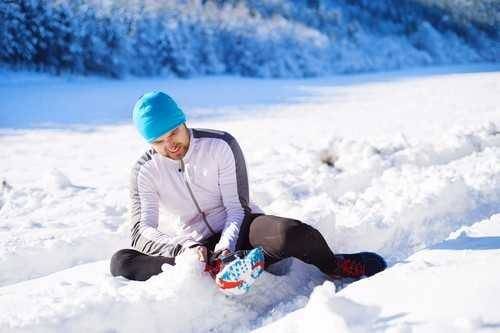Cycling can be an enjoyable and healthy way to stay active, even during the colder winter months in Buffalo. However, it’s important to take precautions to ensure your safety while riding. Here are some tips to keep in mind:
- Dress appropriately: The most important factor in winter weather riding is dressing appropriately. Make sure to wear warm and moisture-wicking clothing to stay dry and comfortable. Layers are also key, so you can easily adjust your temperature as needed. Consider wearing a balaclava or face mask to protect your face from the cold wind. Additionally, gloves or mittens are essential to keep your hands warm and dry. [[1]]
- Use lights: With shorter days and longer nights, it’s important to use lights on your bike. Use a bright headlight and taillight to increase your visibility to drivers and other cyclists. Consider using a reflective vest or clothing as well.
- Check the weather: Before heading out, check the weather forecast to avoid getting caught in a snowstorm or other hazardous conditions. If conditions are particularly treacherous, it may be best to avoid cycling altogether.
- Use appropriate tires: Consider using studded tires or tires with a wider tread for better traction on snowy or icy roads. This can help prevent slips and falls, which can be dangerous when cycling. It’s also important to regularly check tire pressure to ensure they are inflated properly.
- Take it slow: When riding in winter weather conditions, it’s important to slow down and take your time. Give yourself extra time to reach your destination, and be prepared to stop suddenly if necessary. Avoid sudden turns or movements that can cause you to lose traction or control.
- Watch for hazards: Winter weather can create hazards on the road, such as ice, snow, and slush. Watch for these hazards and adjust your riding accordingly. Avoid riding through large puddles or snowdrifts, as they can be deeper than they appear.
- Stay visible: In addition to using lights, it’s important to wear bright or reflective clothing to increase your visibility to others on the road. Consider adding reflective tape to your bike or helmet as well.
- Bring a phone: Always bring a charged cell phone with you when cycling in case of emergencies.
- Plan your route carefully: During winter months, some roads or bike paths may be closed or more hazardous due to snow and ice. Plan your route carefully and avoid any areas that may be particularly dangerous. Stick to well-lit, well-traveled roads if possible.
- Stay hydrated: Even in colder temperatures, it’s important to stay hydrated while cycling. Bring a water bottle with you and take sips periodically throughout your ride. Dehydration can affect your performance and reaction time, so it’s important to stay hydrated.
- Consider taking a class: If you’re new to winter cycling, consider taking a class to learn the necessary skills and safety precautions. Organizations such as the Buffalo Bicycling Club offer classes and resources for winter cyclists.
- Invest in quality gear: While it may be tempting to cut corners on winter cycling gear, investing in high-quality gear can make a big difference in your safety and comfort. Consider purchasing a well-insulated jacket, waterproof pants, and sturdy boots. It’s also important to wear a helmet that fits properly.
By following these tips and staying cautious on the road, you can enjoy safe and comfortable winter cycling in Buffalo. Remember to always prioritize your safety and adjust your riding habits based on weather and road conditions.
At Andrews, Bernstein & Maranto, PLLC, we understand that winter weather can make cycling more dangerous, especially when it comes to bicycle accidents. We want to ensure that all cyclists in Buffalo are aware of the risks and take the necessary precautions to stay safe on the road. Here are some tips that we recommend to cyclists who want to avoid accidents during the colder months:
- Check the weather forecast before heading out, and avoid cycling in icy or snowy conditions.
- Wear warm and visible clothing, including reflective gear, to increase your visibility to drivers.
- Ensure that your bike is equipped with lights and reflectors, especially if you’re cycling in low-light conditions.
- Use wider tires for better traction on snow and ice.
- Keep your bike maintained and in good condition, including checking your brakes, tires, and chain regularly.
- Be aware of road conditions and adjust your riding accordingly, such as slowing down when turning or braking gradually to avoid skidding.
- Consider using studded tires for added traction.
- Always wear a properly fitted helmet to protect yourself in the event of an accident.
- Plan your route carefully to avoid hazardous areas, such as roads that are prone to black ice.
- If possible, cycle with a friend or in a group for added safety.
Despite taking all necessary precautions, accidents can still happen. If you or a loved one has been injured in a bicycle accident during the winter months in Buffalo, don’t hesitate to contact us for legal support and guidance. At Andrews, Bernstein & Maranto, PLLC, we have extensive experience representing injured cyclists and fighting for their rights. We can help you navigate the legal process and pursue the compensation you deserve.
